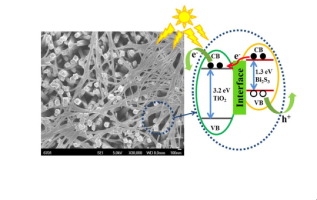Abstract: In this study, a facile MgO template-assisted route has been proposed for the preparation of carbon@MoS2 composites via a one-step hydrothermal method followed by a thermal annealing process. By using sucrose as a carbon source and commercial MgO powder as a structure-directing agent, a three-dimensional sphere-like carbon@MoS2 nanoarchitecture was assembled by one-dimensional worm-like nanorods which were composed of few-layered MoS2 nanosheets and amorphous carbon matrix. The influence of different amount of MgO template on the morphology, structure, and lithium storage performance of the carbon@MoS2 composites is systematically investigated. The carbon@MoS2-2 composite synthesized with a Mo precursor: MgO molar ratio of 1: 1 exhibits much higher reversible capacity (905.3 mAh g(-1) after 100 cycles at a current density of 100 mAh g(-1)) and better high- ratecapability (503.4 mAh g(-1) at 5000 mA g(-1)) than those of bare MoS2 and template- freecarbon@ MoS2-0 composite. Impressively, superior cycling stability is achieved for the carbon@MoS2-2 composite with a capacity retention of 93.4% even after 400 charge/discharge cycles at 5000 mA g(-1). The excellent electrochemical performance for carbon@MoS2-2 composite can be ascribed to its unique hierarchical nanoarchitecture and synergetic effect between MoS2 nanosheets and amorphous carbon. Keywords: template-assisted synthesis; molybdenum disulfide; amorphous carbon; lithium-ion batteries Published in ELECTROCHIMICA ACTA, 211 962-971; 10.1016/j.electacta.2016.06.115 SEP 1 2016 |
